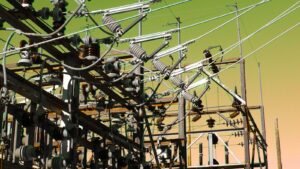Marine Energy Systems: The Potential to Produce 2x the World’s Electricity Demand but Marred by a Sea of Challenges
Marine energy is often thought of as an untapped resource when it comes to renewable energy generation. Reports by IRENA suggest that tidal energy has the potential to generate 1,200TWh of energy. Harnessing the motion from waves can produce 29,500TWh energy and Ocean Thermal Energy Conversion (OTEC) can produce 44,000TWh of energy.
To put that in perspective, that suggests that over twice the global demand of electricity could be met by ocean energies if they were able to be successfully harnessed. Additionally, the capacity factors of marine energy can be quite high with estimates in the U.S. suggesting that capacity factors of 30-70% can be reached for tidal and wave energy.
That potential is so huge and vast that many governments and public institutions have supported policies and grants to accelerate this nascent energy sector in the hopes that it can follow similar commercialization pathways like those of wind and solar. For example, the EU plans to increase the capacity of marine energy sources to up to 40GW by 2050 and multiple sources from the U.S. DOE and U.S. Infrastructure Act are providing funds to grow this sector.
Additionally, corporations that require energy for offshore projects and small island nations can benefit from cheaper energy resources provided by tidal and wave systems when compared to using and transporting costly diesel generators.
However, technical and permitting challenges may prevent marine energy technologies from achieving major growth in the next few years. The sea is a harsh environment, it’s difficult to install and maintain equipment in fast moving waters, and seawater can corrode systems. Innovators in wave and tidal are looking at various solutions and techniques to make maintenance easier and improve the lifetime of these systems.
Financing, market consolidation, and easier permitting processes will be required to rapidly accelerate growth to harness the potential energy the oceans can provide at scale. Although these industries have seen many bankruptcies in the past and some more recent (see Sustainable Marine), staggered approaches to growth and partnerships with regulatory bodies and corporates will be essential to maintain sustainable development and deployment of marine technologies.
Tidal Energy Costs Can Come Down, But With Economies of Scale
Tidal energy is not weather dependent and is easier to predict, however it has regional limitations. Tidal stream generators often use turbines that are spun from tidal currents to produce energy. Common types of configurations for tidal energy generators include axial flow turbine systems (horizontal and vertical axis turbines) and sea kites.
Nova Innovation, Orbital Marine, Simec Atlantis Energy, Sabella, Verdant Power, and Magnallanes are developing axial flow systems and companies like SeaQurrent and Minesto are developing tidal kites which can be used in areas with slower flows. The MeyGen tidal project announced that its tidal stream array generated 50GWh of energy using Simec Atlantis Energy’s turbines.
Advancements in tidal energy are likely to occur as costs for projects come down. It is estimated that between 2016 and 2022, costs for tidal projects dropped close to 40% in the UK. Costs have the potential to continue to go down with larger rotor and rated power devices and economies of scale from larger farms (Ore Catapult).
Wave Energy Systems are Targeting Specific Applications and are Slowly Scaling
Wave Energy systems are less developed than tidal resources and have numerous technology types and configurations available on the market. Some are focusing on grid interconnected applications while others are focusing on specific applications like desalination, supporting oil and gas infrastructure, powering subsea systems, and other niche applications. Challenges can arise from trying to convert the 3-D dynamic motion of waves into stable forms of electricity generation and evaluating different wave technologies against each other can be difficult for investors looking to enter a developing market.
Key companies in the space include MOcean Energy, CalWave, C-Power, Oneka, Oscilla Power and many others. MOcean Energy has had partnerships with corporate partners to advance their technology type and recently announced a new project in Orkney. CalWave successfully completed a trial in California and will be further testing their devices at the Pacwave site where it will be connected to the grid at a pre-permitted location. Oscilla Power is one of the first wave energy convertors to connect their technology to the grid in the U.S. and has done so at a pre-permitted location in Hawaii that has the supportive subsea grid connection and mooring infrastructure.
Ocean Thermal Energy Conversion has Huge Potential, But Still Early Stage
Differences in temperature gradients between warm surface water and cooler deeper waters can vaporize working fluids that are passed through heat exchangers and then can spin turbines to generate electricity in closed loop systems as seen in technologies like Makai Ocean Engineering.
This works well in tropical regions where temperature differentials are close to 20°C between surface and deeper waters. The potential to generate energy from Ocean Energy Conversion is so large because the capacity factors are known to be around 90% but these technologies have not been implemented widely due to low technology readiness levels, high CapEx costs, and the environmental effects of large pipe structures are still being researched.
Strategically Moving Forward
Costs for tidal projects have dropped 40% since 2016 and estimates suggest that LCOE costs for wave and tidal have the potential go down to $0.10/kWh with economies of scale. However, overcoming technical challenges, understanding the impact on marine ecosystems and navigating regulatory frameworks will be essential.
There have been several bankruptcies in the sector. Sustainable Marine recently entered administration after a lengthy process of navigating regulatory frameworks, Verdant Power had to file 23 permits with 14 agencies for a New York pilot project just to get it started, Polemis Wave Power had successfully connected to the grid but still went bankrupt and Bluris, an Ocean Thermal Energy Conversion developer was acquired by Allseas after it was unable to raise more funds.
It is critical that marine energy technologies are approached with both enthusiasm and intelligence given the fact that while there is immeasurable potential for these technologies to generate energy, smart strategies for growth will still be required to face the economic and technical challenges to get these projects off the ground and implemented at scale.
Recent Activity
- Floating Power Plant and Simply Blue Group were awarded funding from the EU through the innovation fund to pilot projects to show integrated systems using wave energy convertors. Simply Blue Group will use CorPower Ocean’s wave energy technology.
- SeaQurrent raised $5M to commercialize their TidalKite technology from investors EIT InnoEnergy, PMH Investments, Fund for Firsian Companies, and NOM.
- Mocean Energy is partnering with Baker Hughes, Serica Energy, Harbour Energy, Transmark Subsea Verlume, and PPTEP on the Renewables for Subsea Power project focusing on connecting Moceans Blue X wave energy convertor to Verlume’s Halo underwater battery to show how subsea equipment can be powered with wave energy. Mocean Energy also recently received close to $3.7M from the EU to develop a 250kW wave machine in Orkney in 2025 at a grid connected site with the European Marine Energy Centre (EMEC).
- Minesto is collaborating with the utility SEV to build a tidal kite array in the Faroe Islands with the potential to generate 20-40MW of capacity at each location for a total of 120MW/350GWh per year.




